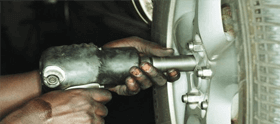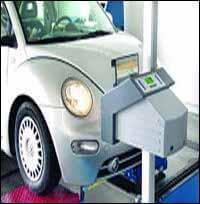About Tyres
A tyre is a composite, in other words an inseparable assembly of materials with very different properties, whose manufacture demands great precision. It is made up of the following semi-finished products :
- The Inner liner. A layer of airtight synthetic rubber. This is found inside the tyre and functions as the modern equivalent of the inner tube.
- The casing ply. This casing is composed of fine textile fibre cords, laid down in straight lines and sandwiched in rubber. These cords are a key element in the structure of a tyre and enable it to resist pressure. In each ply of a car tyre, there are about 1400 cords, each of which can resist a force of 15 kg.
- The lower bead area. Its role is to transmit engine and braking torque from the rim of the tyre through to the contact patch.
- Supple rubber sidewalls help to protect the tyre from shocks that could damage the casing, eg minor shocks against pavements, potholes etc. There is hard, protection rubber where the tyre joins the rim.
- Bracing plies. Reinforced with very fine, very resistant steel cords in a rubber sandwich. These 2, (occasionally more), plies are stuck together and cross the tread area at angles of around 60 deg to each other. Their steel cords cross the casing cords to form braced triangles. This is known as triangulation, and it makes the crown rigid. The plies encircle the entire crown of the tyre, and perform a very complex role: they must be sufficiently rigid around the tyre’s circumference that they aren’t stretched by centrifugal force, thus controlling the diameter of the tyre in all conditions. they must also be rigid transversally, to resist the stresses and strains of cornering. At the same time, they must be supple enough in a vertical sense, to “absorb” deformations caused by surface variations and other obstacles. To obtain these plies, steel has to be stuck to rubber. It is very difficult to do, but Michelin has mastered the art of perfect cohesion between these dissimilar materials, which is absolutely essential.
- The tread is laid over the bracing plies. It is the patterned part of the tyre that will be in contact with the road. The tread in the contact patch must be able to resist very significant stresses. The tread rubber compound must grip on all types of surfaces, resist wear and abrasion, and heat up as little as possible.



